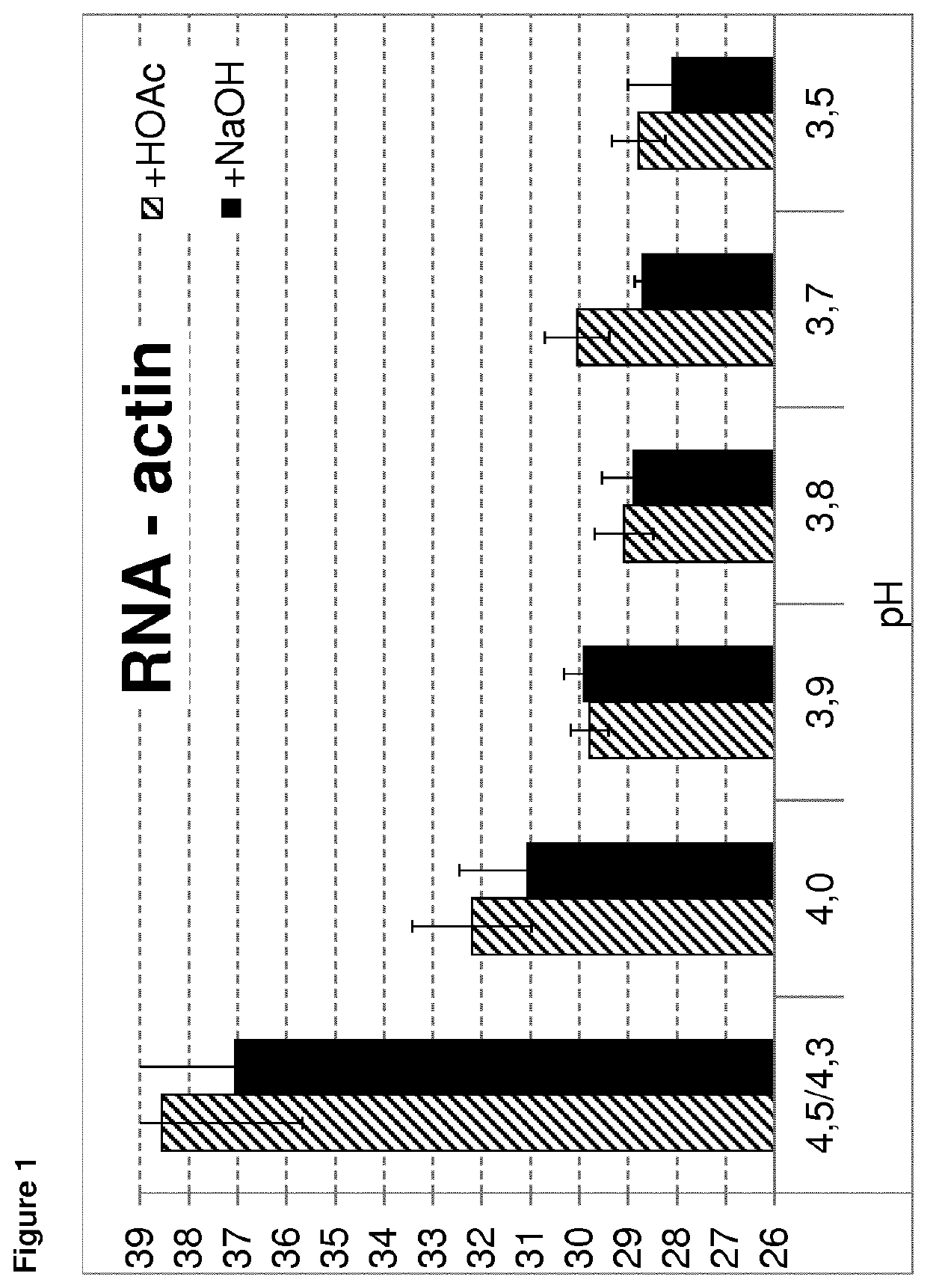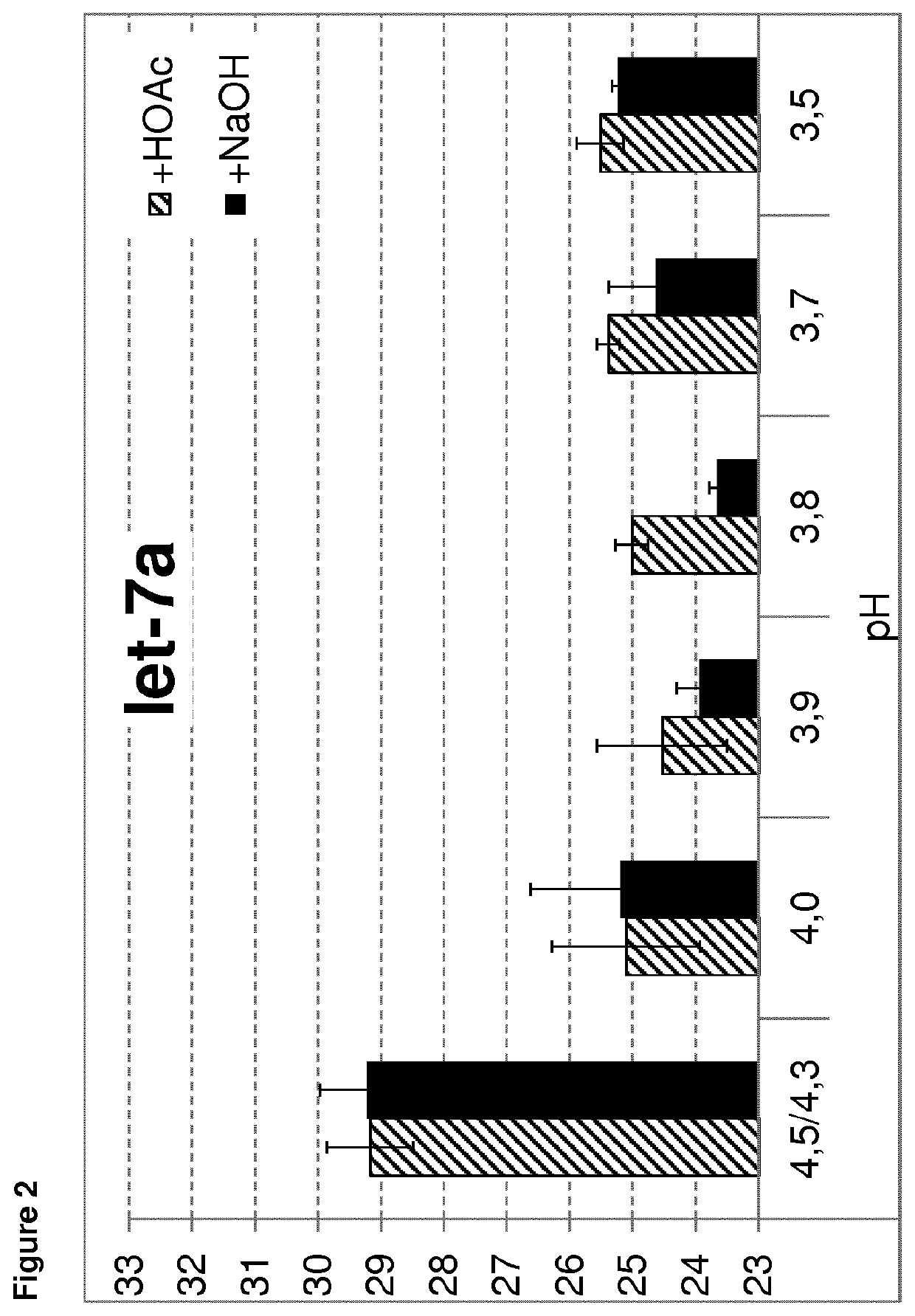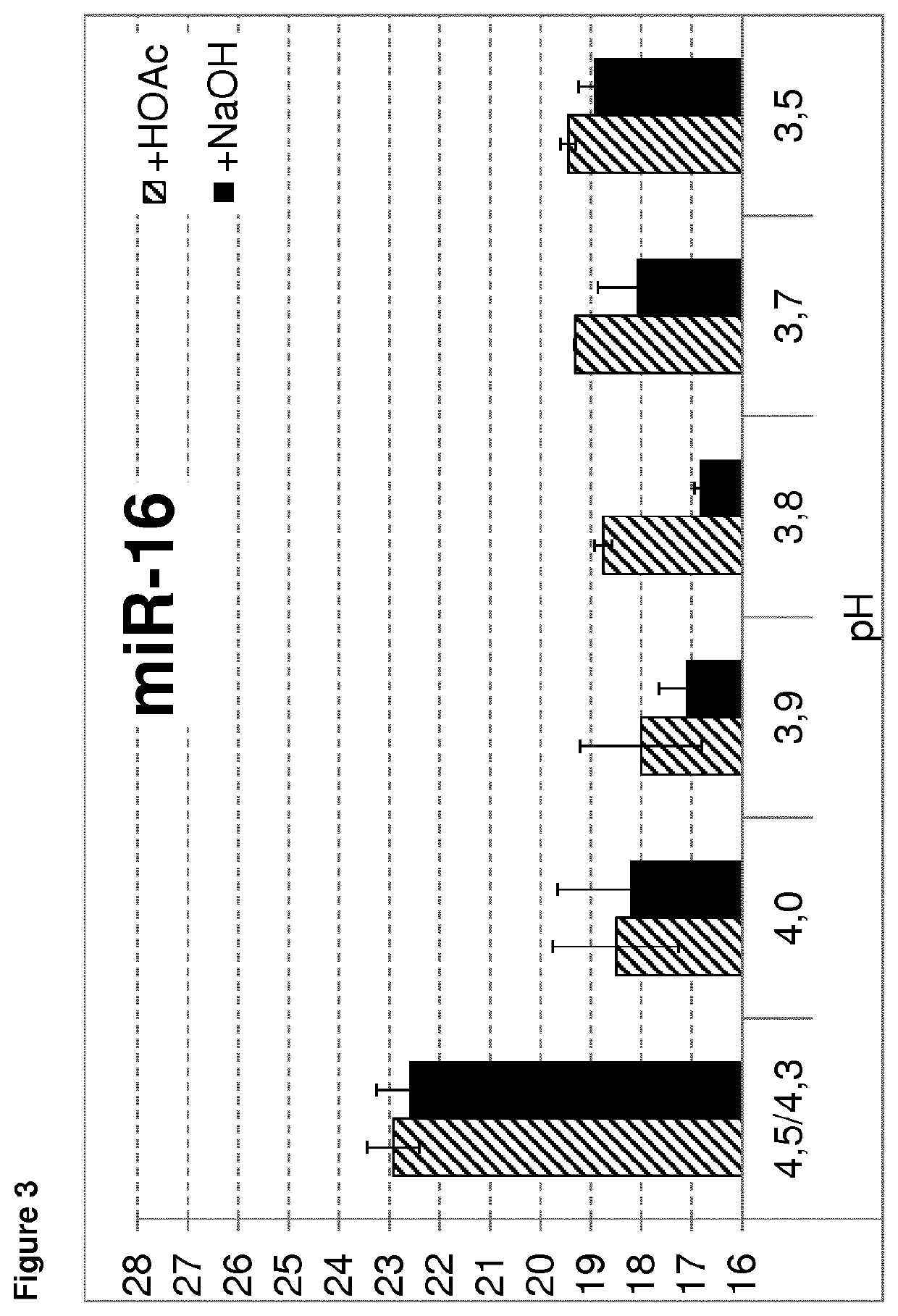Method for isolating RNA with high yield
a rna isolating and high-quality technology, applied in the field of rna isolating with high-quality rna, can solve the problems of disturbing the isolation procedure, the use of organic solvents during protein precipitation is avoided, and the amount of total rna is not sufficient for subsequent analysis, etc., to achieve the effect of flexible use, improved results and improved stability
- Summary
- Abstract
- Description
- Claims
- Application Information
AI Technical Summary
Benefits of technology
Problems solved by technology
Method used
Image
Examples
specific embodiments
[0109]Non-limiting specific embodiments of the method of the invention will be described in the following.
[0110]According to one embodiment, the method comprises the following steps[0111]x) optionally disrupting a sample;[0112]a) adding a precipitation buffer to the sample, which optionally is a disrupted sample, to prepare an acidic precipitation mixture[0113]wherein said precipitation buffer comprises a metal cation precipitant and a buffering agent, has a pH value selected from 3.0 to 4.0, 3.1 to 3.9, 3.2 to 3.9, 3.3 to 3.9, 3.4 to 3.9, 3.5 to 3.9 and 3.5 to 3.8 and does not comprise an organic solvent selected from aprotic polar solvents and protic solvents and wherein the acidic precipitation mixture comprises the metal cation precipitant in a concentration selected from 50 mM to 175 mM, 60 mM to 170 mM, 65 mM to 165 mM, 70 mM to 160 mM, 75 mM to 155 mM, 80 mM to 150 mM, 85 mM to 145 mM and 90 mM to 140 mM and precipitating proteins;[0114]b) separating the precipitate from the ...
example 1
I. Example 1
[0207]1. Materials
[0208]Precipitation buffer A: (0% DMSO; ZnCl2 (1.909 M); NaOAc; acidic pH)
[0209]Precipitation buffer B: (45% (v / v) DMSO; ZnCl2 (1.909 M); NaOAc; pH 4.0-4.5). This buffer corresponds to Precipitation buffer XP of WO2016 / 009059.
[0210]Silica columns (RNeasy® MinElute® spin columns)
[0211]Collection tubes (1.5 ml and 2 ml)
[0212]Washing buffer RWT (QIAGEN; contains GTC, 2 volumes ethanol (96%-100%) are added to the buffer concentrate RWT prior to use)
[0213]Washing buffer RPE (QIAGEN; 4 volumes ethanol (96%-100%) are added to the buffer concentrate RPE prior to use)
[0214]A lysis buffer comprising guanidine thiocyanate.
[0215]RNase-free water
[0216]miScript® primer assay
[0217]2. Method
[0218]Each condition was tested in triplicate.
[0219]Sample Preparation
[0220]1 ml pooled plasma is contacted with 300 μl lysis buffer and 24 μl of a non-ionic detergent to disrupt the sample. Sample disruption is supported by vortexing and incubation for 3 min at room temperature.
[02...
example 2
II. Example 2
[0243]To test the influence of the pH of the precipitation buffer on RNA isolation, precipitation buffer with varying pH was used. The methods as described in example 1 were used for isolation of mRNA or small RNA. The pH of precipitation buffer A was adjusted to a 3.5, 3.7, 3.8, 3.9, 4.0 and 4.3 / 4.5 as control. Each pH adjustment was done twice, once the pH was adjusted upwards using NaOH and once the pH was adjusted downwards using acetic acid. Thereby, it was ensured that the observed effect is only based on the pH value. Isolation of the mRNA of actin or the small RNA let-7a or miR-16 was analyzed. All steps were performed as described in example 1.
[0244]The mean Ct results of the RNA isolation dependent on the pH of the precipitation buffer are shown in FIGS. 1 to 3. As demonstrated, better results (lower Ct values) are obtained using a precipitation buffer with a pH of 4.0 or lower. Using a pH of 4.3 or 4.5, much higher Ct values are observed, indicating a much lo...
PUM
| Property | Measurement | Unit |
|---|---|---|
| volume | aaaaa | aaaaa |
| v/v | aaaaa | aaaaa |
| pH | aaaaa | aaaaa |
Abstract
Description
Claims
Application Information
 Login to View More
Login to View More - R&D
- Intellectual Property
- Life Sciences
- Materials
- Tech Scout
- Unparalleled Data Quality
- Higher Quality Content
- 60% Fewer Hallucinations
Browse by: Latest US Patents, China's latest patents, Technical Efficacy Thesaurus, Application Domain, Technology Topic, Popular Technical Reports.
© 2025 PatSnap. All rights reserved.Legal|Privacy policy|Modern Slavery Act Transparency Statement|Sitemap|About US| Contact US: help@patsnap.com



